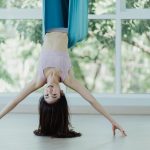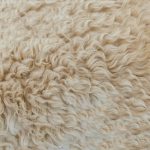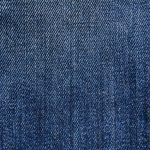Like the eco-conscious athletes of today, you’re likely wondering if sustainable fabrics can truly keep up with high-performance demands. It’s a question worth exploring, especially as more brands prioritize both the planet and your active lifestyle. With innovations in textiles, you might be surprised by the options available. Let’s uncover how these materials balance performance and sustainability, and what that means for your wardrobe choices.
Table of Contents
Key Takeaways
- Bamboo fabric offers exceptional moisture-wicking properties, keeping wearers dry and comfortable during activities.
- Recycled polyester is lightweight and durable, perfect for high-energy workouts while conserving energy and reducing waste.
- Recycled polyamide retains high durability and elasticity, providing long-lasting performance with excellent moisture-wicking capabilities.
- TENCEL Lyocell is soft and breathable, enhancing comfort and allowing unrestricted movement during intense exercises.
- Respectlife fabric combines organic materials with moisture-wicking properties, ensuring both durability and comfort for active lifestyles.
Overview of Sustainable Fabrics
Sustainable fabrics are revolutionizing the textile industry by offering eco-friendly alternatives without sacrificing quality or performance. You’ll find these innovative materials made from organic or recycled sources, which greatly reduce environmental impact.
Cotton, hemp, and linen are popular choices, known for their durability and breathability. Recycled polyester, derived from plastic bottles, provides a strong option while keeping waste out of landfills.
Many brands are embracing these textiles, recognizing that consumers want stylish, high-performance clothing made responsibly. When you choose sustainable fabrics, you’re not just investing in your wardrobe; you’re supporting a movement towards ethical production and environmental stewardship.
As you explore your options, you’ll see that sustainability and performance can go hand in hand, leading to a more mindful fashion future.
Bamboo Fabric: Nature’s Versatile Textile
Bamboo fabric is an incredible choice for those seeking eco-friendly textiles.
It’s not only a renewable resource, but it also boasts moisture-wicking properties that keep you comfortable.
Plus, its antimicrobial advantages make it a smart option for active wear and everyday use.
Renewable Resource Benefits
When it comes to eco-friendly textiles, bamboo fabric stands out as a top contender due to its remarkable renewable resource benefits.
Bamboo grows incredibly fast, reaching maturity in just three to five years, which means it can be harvested sustainably without depleting resources. Unlike cotton, bamboo doesn’t require pesticides or fertilizers, making it a safer choice for the environment.
Its natural ability to regenerate guarantees that you’re supporting a cycle of renewal rather than contributing to deforestation. Additionally, bamboo absorbs more carbon dioxide than many trees, helping to combat climate change.
Moisture-Wicking Properties
While many fabrics can struggle to manage moisture, bamboo fabric excels with its exceptional moisture-wicking properties. When you wear bamboo textiles, you’ll notice how it pulls moisture away from your skin, keeping you dry and comfortable.
This is especially beneficial during workouts or in hot weather, as it helps regulate your body temperature. The fibers are naturally breathable, allowing air to circulate and further enhancing your comfort.
Plus, bamboo fabric dries quickly, so you won’t have to deal with dampness for long. Whether you’re hiking, practicing yoga, or simply enjoying a day outdoors, choosing bamboo fabric guarantees you stay fresh and dry.
It’s a practical choice for anyone seeking both performance and sustainability in their wardrobe.
Antimicrobial Advantages
How can a fabric be both sustainable and fight bacteria? Bamboo fabric offers a remarkable solution. Sourced from fast-growing bamboo plants, it’s eco-friendly and renewable.
Its natural antimicrobial properties effectively inhibit the growth of bacteria, making it a great choice for activewear and undergarments. When you wear bamboo fabric, you’ll notice less odor, as it helps keep you fresh throughout your day.
Additionally, bamboo’s moisture-wicking abilities complement its antimicrobial benefits, ensuring you stay dry and comfortable.
This versatile textile not only supports sustainable practices but also provides high-performance advantages. By choosing bamboo, you’re not just making an eco-conscious decision; you’re also investing in a fabric that actively protects you from unwanted bacteria and odors.
The Role of Recycled Polyester in Performance Wear
Recycled polyester is making waves in the performance wear market, and you might be surprised by its environmental benefits.
Not only does it help reduce plastic waste, but it also boasts impressive performance characteristics that meet the demands of active lifestyles.
As consumer interest grows, understanding its role in sustainable fashion becomes essential.
Environmental Benefits Explained
As you explore the world of performance wear, you’ll find that recycled polyester offers significant environmental benefits that go beyond just its functionality. By repurposing plastic bottles and other waste materials, recycled polyester helps reduce landfill waste and minimizes the need for new resources. This process conserves energy and lowers greenhouse gas emissions, making a positive impact on the planet.
| Benefit | Impact |
|---|---|
| Reduces landfill waste | Less plastic in landfills |
| Conserves energy | Lower energy consumption |
| Lowers greenhouse emissions | Reduces carbon footprint |
Choosing recycled polyester not only enhances your performance wardrobe but also supports sustainability. You’re making a choice that benefits the environment and promotes a circular economy.
Performance Characteristics Overview
While embracing sustainability with fabrics like recycled polyester, you also benefit from impressive performance characteristics that enhance your active lifestyle.
This fabric offers exceptional moisture-wicking abilities, keeping you dry during intense workouts. Its lightweight nature allows for freedom of movement, making it ideal for running, cycling, or any high-energy activity.
Recycled polyester is also durable, resisting wear and tear from frequent use, while retaining its shape and color over time.
Plus, it dries quickly, ensuring you stay comfortable, whether you’re hitting the gym or enjoying outdoor adventures.
With recycled polyester, you don’t have to compromise between performance and eco-friendliness; it delivers both, allowing you to pursue your passions sustainably.
Market Demand Insights
The growing demand for sustainable materials in performance wear highlights the pivotal role of recycled polyester in the activewear market.
You’re likely noticing brands increasingly integrating recycled polyester into their products, and for good reason. This fabric not only reduces waste but also delivers excellent moisture-wicking, breathability, and durability—qualities essential for high-performance gear.
As consumers, you’re prioritizing eco-friendly choices, pushing companies to innovate and expand their offerings. The versatility of recycled polyester means it can be used across a range of activities, from running to yoga.
Exploring the Benefits of Recycled Polyamide
Why should you consider recycled polyamide for your next fabric choice? This innovative material not only reduces waste but also brings impressive performance benefits to your wardrobe. Recycled polyamide is durable, lightweight, and offers excellent moisture-wicking properties, making it perfect for activewear. Plus, it retains the same quality and feel as virgin polyamide, ensuring you don’t compromise on comfort or style.
Here’s a quick comparison of its benefits:
| Feature | Recycled Polyamide |
|---|---|
| Sustainability | Uses post-consumer waste |
| Performance | High durability and elasticity |
| Moisture Management | Excellent wicking properties |
TENCEL Lyocell: A Biodegradable Option for Activewear
When you’re looking for activewear that’s both high-performing and eco-friendly, TENCEL Lyocell stands out.
It’s made from sustainably sourced materials, ensuring you’re making a responsible choice.
Plus, its biodegradability means you can enjoy comfort and performance without harming the planet.
Sustainable Sourcing Process
Although many fabrics claim sustainability, TENCEL Lyocell stands out as a biodegradable option for activewear that truly delivers on performance.
The sustainable sourcing process behind TENCEL Lyocell guarantees minimal environmental impact through careful practices. Here’s what makes it special:
- Sustainable Wood Sourcing: TENCEL Lyocell is made from wood pulp sourced from sustainably managed forests, guaranteeing responsible harvesting.
- Closed-Loop Production: The manufacturing process recycles water and solvents, considerably reducing waste and pollution.
- Biodegradable End Product: Once you’re done with your activewear, TENCEL Lyocell breaks down naturally, leaving no harmful residues behind.
Performance and Comfort
While you seek activewear that blends sustainability with performance, TENCEL Lyocell proves to be an exceptional choice.
This fabric offers a soft, smooth texture that feels great against your skin, enhancing your comfort during workouts. With its excellent moisture-wicking properties, TENCEL Lyocell keeps you dry by absorbing sweat and allowing it to evaporate quickly.
You’ll appreciate how it maintains breathability, ensuring you stay cool even during intense exercises. Additionally, its natural stretch allows for unrestricted movement, making it ideal for various activities.
The fabric’s lightweight nature means you won’t feel weighed down, allowing you to focus on your performance. By choosing TENCEL Lyocell, you’re not just prioritizing comfort—you’re also making a sustainable fashion statement.
Biodegradability Benefits
As you embrace eco-friendly choices in your activewear, TENCEL Lyocell stands out for its exceptional biodegradability.
When you’re ready to make a positive impact, consider these benefits:
- Natural Decomposition: TENCEL Lyocell breaks down in soil, returning nutrients to the earth without harming the environment.
- Reduced Waste: Choosing biodegradable fabrics helps minimize landfill contributions, promoting a more sustainable fashion industry.
- Eco-Friendly Production: Made from sustainably sourced wood pulp, TENCEL Lyocell uses a closed-loop process that recycles water and solvents, ensuring minimal environmental impact.
Advantages of Respectlife Fabric for Eco-Conscious Consumers
When you choose Respectlife Fabric, you’re not just making a fashion statement; you’re supporting a sustainable future.
This innovative fabric combines eco-friendliness with high performance, ensuring you don’t have to compromise on quality. It’s made from organic materials, reducing environmental impact while providing superior durability and comfort.
You’ll find it breathable and moisture-wicking, perfect for active lifestyles. Plus, it’s easy to care for, which means less energy and water use during washing.
By opting for Respectlife Fabric, you’re investing in products that prioritize ethical production practices and worker welfare.
Choosing Respectlife Fabric means supporting ethical production and enhancing worker welfare with every purchase.
This fabric empowers you to make responsible choices without sacrificing style, giving you peace of mind that you’re contributing to a healthier planet.
Innovations in Fabric Production Methods
Innovations in fabric production methods are transforming the textile industry, making it possible to create high-performance materials with minimal environmental impact.
You can now find processes that prioritize sustainability while enhancing fabric quality. Here are three notable advancements:
- Recycled Materials: Fabrics made from post-consumer waste, like plastic bottles, considerably reduce landfill contributions and resource consumption.
- Waterless Dyeing Techniques: These methods minimize water use and toxic chemical discharge, creating vibrant colors without harming ecosystems.
- Biodegradable Fibers: Innovations in sourcing natural fibers allow for fabrics that decompose at the end of their life cycle, reducing long-term waste.
These methods not only promote sustainability but also pave the way for a more responsible textile future, aligning performance with eco-consciousness.
Performance Features of Sustainable Fabrics
While sustainable fabrics are often celebrated for their eco-friendly credentials, they also boast impressive performance features that meet the demands of modern consumers.
These materials are designed to be durable, ensuring they withstand daily wear and tear. Many sustainable fabrics offer moisture-wicking properties, keeping you dry and comfortable during physical activities.
You’ll also find options with excellent breathability, allowing air circulation to regulate body temperature. Some fabrics even possess natural antimicrobial properties, reducing odor and enhancing hygiene.
Additionally, many sustainable textiles are lightweight, making them ideal for layering or travel.
Environmental Impact of Sustainable Textiles
Sustainable textiles not only excel in performance but also play a significant role in reducing environmental impact. By choosing these fabrics, you contribute to a healthier planet in several ways:
- Reduced Water Usage: Sustainable fibers often require less water during production, minimizing strain on local water sources.
- Lower Carbon Footprint: Many sustainable materials are produced with eco-friendly methods, leading to fewer greenhouse gas emissions compared to conventional textiles.
- Biodegradability: Unlike synthetic fabrics, sustainable textiles often break down naturally, reducing landfill waste and pollution.
When you opt for sustainable fabrics, you’re not just making a style choice; you’re actively participating in a movement towards a more sustainable future.
Your choices matter, and they can lead to meaningful change.
Consumer Trends in Sustainable Fabric Choices
How are consumer preferences shaping the landscape of sustainable fabric choices?
You’re likely noticing a shift towards eco-friendly materials as awareness of environmental issues grows. More of you’re prioritizing fabrics made from organic, recycled, or biodegradable sources, reflecting a desire for sustainability without sacrificing quality.
Brands are responding by offering innovative textiles that combine performance with eco-consciousness, like moisture-wicking bamboo or durable hemp blends. You might appreciate how these fabrics not only reduce your carbon footprint but also enhance your wardrobe’s functionality.
As you become more informed, your preferences push companies to adopt transparency and ethical practices, making sustainable options more accessible.
Ultimately, your choices are driving a change in the fashion industry, encouraging a future where style and sustainability go hand in hand.
Frequently Asked Questions
How Do Sustainable Fabrics Compare in Cost to Conventional Fabrics?
Sustainable fabrics typically cost more than conventional ones due to their eco-friendly production processes. However, investing in them often leads to long-term savings, as they’re durable and reduce the need for frequent replacements.
What Certifications Should I Look for in Sustainable Fabrics?
When searching for sustainable fabrics, look for certifications like GOTS, OEKO-TEX, and Fair Trade. These indicators guarantee the materials meet environmental and social standards, helping you make informed, responsible choices for your wardrobe.
Can Sustainable Fabrics Be Used for Formal Wear?
Absolutely, you can use sustainable fabrics for formal wear! They’re stylish and versatile, offering elegance without compromising the environment. Look for options like organic cotton, Tencel, or recycled polyester to elevate your wardrobe sustainably.
How Do I Care for Sustainable Fabrics?
Don’t worry, caring for sustainable fabrics isn’t complicated. You should wash them in cold water, avoid harsh detergents, and air dry whenever possible. This way, you’ll keep your garments looking great and lasting longer.
Are Sustainable Fabrics Suitable for All Skin Types?
Sustainable fabrics can be suitable for most skin types, but you should always test them first. Some materials might cause irritation, so pay attention to your body’s reactions and choose what feels most comfortable for you.
- Does Chiffon Fabric Stink - July 15, 2025
- Does Chiffon Fabric Affect the Economy - July 15, 2025
- Does Cotton Fabric Have a Nap - July 15, 2025







